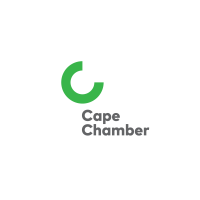The digital playing field doesn’t care how large a business is—only how compelling its story looks and feels. Small businesses have figured this out faster than most, leaning heavily into visual content not just as decoration but as currency in a market that trades in attention. Platforms like Instagram, TikTok, LinkedIn, and even email newsletters are no longer places for passive branding; they’re stages for expression, and the spotlight favors those who know how to perform visually. While large corporations may have bigger budgets, smaller teams often have sharper instincts and closer relationships with their audiences—giving their content an edge that algorithms can’t ignore.
Relatable Visuals Build Trust Before the Sale Ever Happens
Authenticity is one of the few things viewers can still feel through a screen. Small businesses often thrive by sharing images and videos that feel lived-in, local, and relevant to their actual customer base. Whether it’s a bakery showing the 4 a.m. pre-dawn prep or a neighborhood print shop featuring a regular customer’s project, this kind of content invites the viewer into a relationship. It’s not flashy—it’s familiar, and in a sea of overly curated media, familiarity has become the most effective form of marketing.
Consistency Beats Perfection on Social Feeds
A common misconception is that visual content must be polished to perform. In reality, consistent and honest posting tends to land better than picture-perfect grids or cinematic videos. Small businesses can lean into this by showing the rhythm of their day-to-day: new arrivals, staff moments, customer shout-outs, packaging scenes—simple frames that tell ongoing stories. What matters more than aesthetic perfection is a pulse, a sense that someone is there, sharing in real time rather than broadcasting from a marketing playbook.
Smart Tools Make Small Teams Feel Bigger
Leveraging AI photo editing tools allows businesses to get more mileage out of every image without draining their time or resources. Instead of creating separate visuals for each platform from scratch, one high-quality photo can be adapted and optimized in minutes using intelligent features that handle the heavy lifting. With capabilities like automatic background removal, smart retouching, and content-aware resizing, small teams can quickly produce clean, professional assets for social media, websites, and even printed materials. To explore the best tools and techniques available, visit here for more information.
User-Generated Content Is an Untapped Goldmine
While big brands spend on influencers, small businesses are quietly winning with real people doing the talking for them. Encouraging customers to tag their purchases, leave video reviews, or share unboxings creates a loop of engagement that money can't buy. These visual endorsements carry more weight because they come from people who weren’t paid to pretend. Featuring this content not only validates the product—it reflects a culture of shared enthusiasm that followers want to join.
Emotions Drive Shares, and Small Brands Know Their Audience
Emotionally resonant content still travels farther than the most expensive ad campaigns. Small business owners often know their audience on a first-name basis, which gives them a sixth sense for what will spark joy, pride, nostalgia, or even laughter. A local florist that posts a petal-strewn apology bouquet or a bike shop that features a kid’s first ride isn’t just selling a product—they’re triggering moments viewers want to pass along. And when a piece of content gets shared, it steps outside the algorithm and enters a real-life recommendation chain.
Behind-the-Scenes Content Adds Texture and Humanity
Pulling back the curtain on how things are made, packaged, fixed, or even delayed, gives depth to the final product. Small businesses that invite their followers into these unpolished moments tend to hold attention longer and earn deeper loyalty. Showing the person who stitched the bag, painted the sign, or hand-selected the beans makes the item feel more alive. It also reinforces the idea that real people, not faceless processes, are behind the brand.
In an era where algorithms decide what gets seen, the human elements of creativity, timing, and connection are more valuable than ever. Small businesses, often closer to their communities and unburdened by brand committees, can act faster and with more feeling. When they choose to express themselves visually, it’s not filtered through layers of approval—it’s immediate, real, and alive. That energy is contagious, and across platforms, it’s what keeps followers coming back and turning into customers.
Join the Cape Girardeau Area Chamber of Commerce to connect, engage, and elevate your business while making a lasting impact in our vibrant community!


